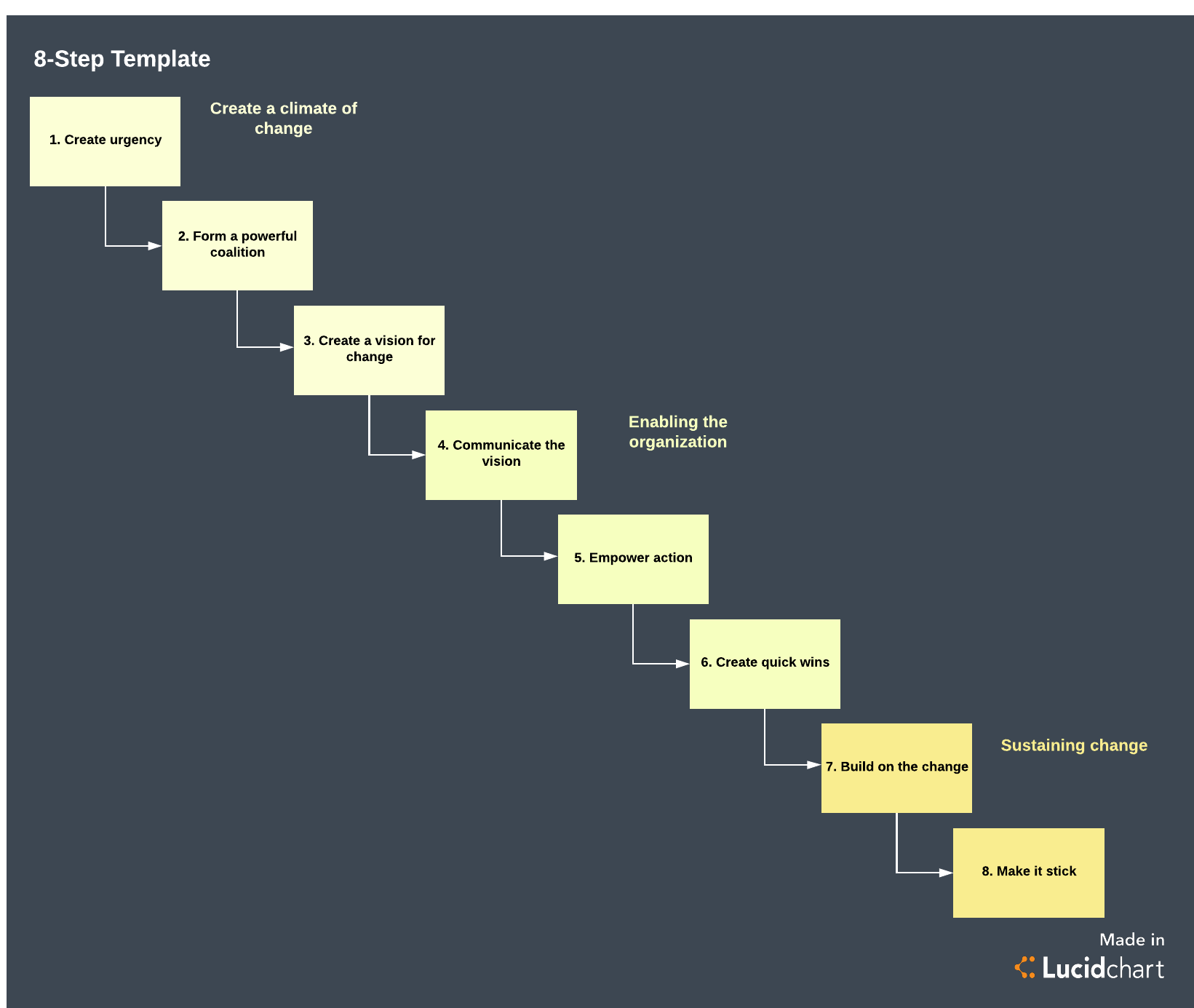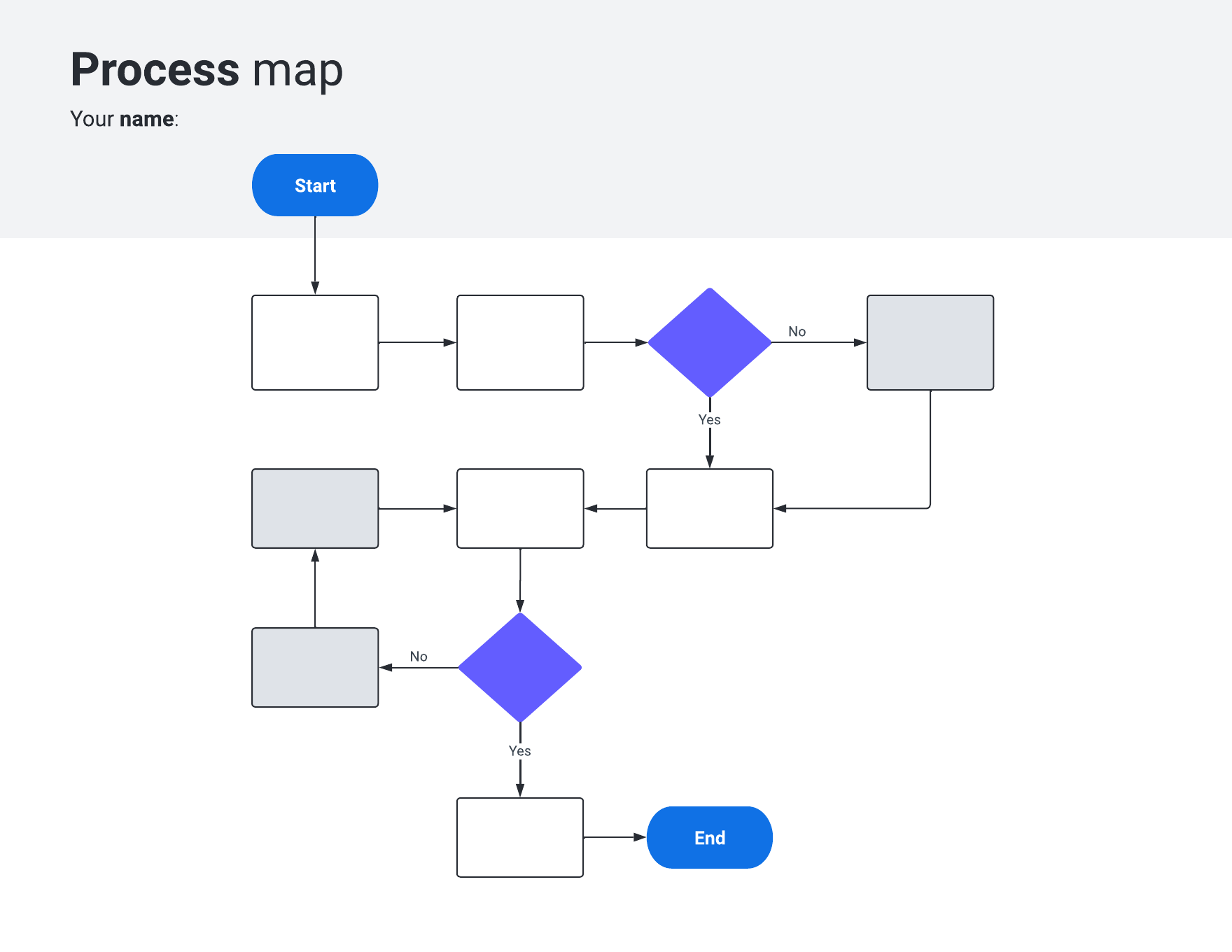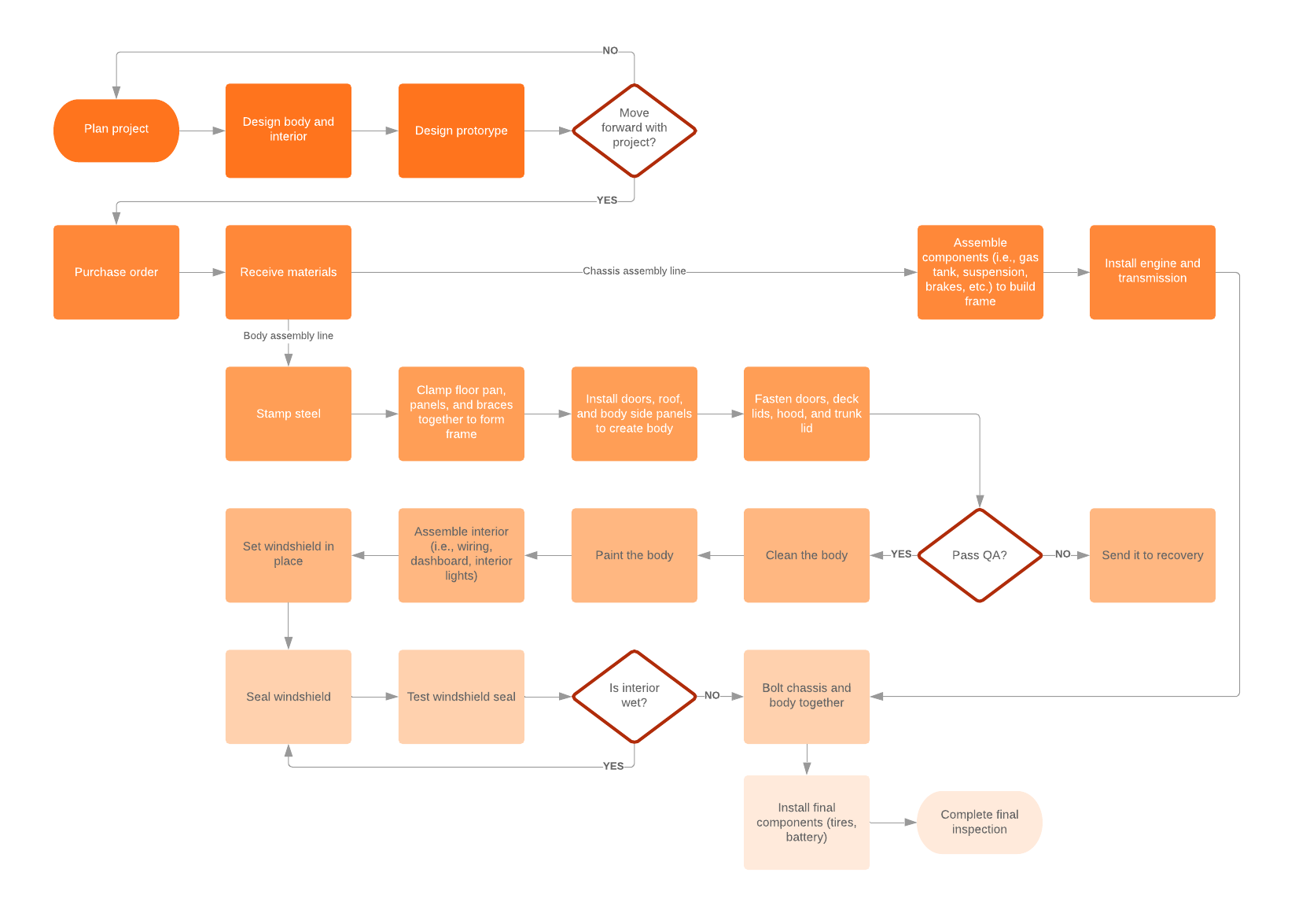“Nothing is so painful to the human mind as a great and sudden change.”
—Mary Wollstonecraft Shelley, Frankenstein
Our world is one of change. We’re all beholden to the laws of time and space, and life dictates that we all change, voluntarily or involuntarily. Organizational change, however, is often met with resistance, especially within organizations that have existed for a long time. Whether you’re a leader or one of the many employees who make it work, implementing changes can be an intimidating prospect, especially given the long list of daily challenges that already accompany any business undertaking.
But businesses must adapt to be sustainable, so even successful companies working under a proven system or method have to update their practices and ensure their durability over time. During big changes, great leadership can make the difference between companies that thrive and companies that fade. Leaders who seamlessly navigate also set themselves up to reap the biggest payoffs.
Although you'll find many experts on organizational change, Dr. John Kotter is the leading voice on change management models in the business world. As a Harvard Business School professor, author of the 1995 book Leading Change, and a world-renowned thought leader on organizational change, Kotter broke down the change process into eight change management steps that we now refer to as Kotter’s change model example.
Let’s take a deeper look at each step.

A look at Kotter's change model example
Dr. Kotter developed his change model after observing numerous leaders and organizations before, during, and after the process of transforming or executing their strategies. The Kotter approach to change management breaks down organizational change leadership into the following steps:
1. Create a sense of urgency
The adage “If it ain’t broke, don't fix it” dominates the culture of many organizations. As such, all effective change must be presented as the solution to a problem. Your business can achieve this as you:
- Assess any potential threats that could arise in the near or distant future, such as changes in technology, advancements of your competition, changes in market demand, etc.
- Address potential opportunities that your company could capitalize on.
- Begin a candid dialogue where you’re given a chance to explain your vision convincingly, while giving an opportunity for stakeholders to voice concerns and think openly about your proposal.
- Seek support from stakeholders, customers, and influential industry leaders to strengthen your standing.
2. Form a powerful coalition
To lead the charge on a big company change, you will need allies and stakeholders. Having other visible company members united behind your vision sends a powerful message and helps spread support. Try one of these proven methods:
- Identify the key change leaders and stakeholders in your organization, and ask for their support in implementing your vision.
- Create a coalition that consistently and publicly operates as a team.
- Assess the weak areas of the coalition, and compensate by involving many members from across various departments and company levels. Having diversity across the job title and level will distribute the strength of the vision across the myriad positions within your company.
3. Create a vision for change
The change process began because you had a vision for how things could and should be done differently. You have to make that vision clear and understandable to achieve the change you desire. Use visuals to map out processes and systems and see what's working and what’s not—they can help you establish urgency and create a clear vision for change.
As part of this process, you must also:
- Identify the core values you want to embody in your change.
- Develop a mission statement, or one to two sentences that capture the most important parts of the future you envision.
- Create a logical strategy for executing that vision.
- Make sure stakeholders and members of your coalition can communicate that vision clearly and concisely.
- Rehearse the mission and vision statement by reciting them often.
4. Communicate the vision
Your organization probably has lots of communication that you will be in competition with. For this reason, it’s not enough to just email your vision or share it with your organization members. To effectively institute the change, you must repeat it every chance you get and demonstrate the behavior that you wish to see:
- Speak convincingly and persuasively about your vision often.
- Tie your vision to everything within your company, from operations to company morale, and tie everything back to your vision.
- Share the visuals you’ve created in the previous step to clearly demonstrate the differences between current state and future state.
- Confront people’s concerns and anxieties, publicly and candidly.
5. Remove obstacles
As you’ve undoubtedly found out by this point, you have to expect resistance to change. To gain momentum for your vision, remove obstacles to adopting your new idea.
- Find industry leaders to reinforce the value of your change by delivering on it.
- Assess the layout of your organization and ensure that your vision is aligned with the various levels of the organization, and vice versa.
- Identify those most resistant to your change and work to remove their concerns, or create proactive solutions around their resistance.
- Reward and recognize those who support and implement change in its early phase.
6. Create short-term wins
Change is implemented not just by a spark, but by a consistent current. You have to build momentum for your vision to make sure it sticks. Short-term victories are great motivators for those who are working on your new vision and are a great way to combat any naysayers or critics of your vision. Here are some ways to do this:
- Find short-term projects that aren’t costly and don’t require sign off from any potential opposition.
- Carefully select the right project or target—failing at an early goal can undermine the value of your proposed change.
- Reward the team members who are essential in meeting targets.
7. Build on the change
Early victories, while great for inciting the change, are not enough to sustain it. Quick wins may deceive you or your teammates that the process of change is complete, but true change must be settled with repetition and expansion. To build on change, you must:
- Analyze what went right and what went wrong after each victory.
- Set gradually more ambitious goals that can build exponential momentum upon achievement.
- Bring on additional influential stakeholders or change agents.
8. Anchor the changes in corporate culture
The final step to your change process is ensuring that it is embedded into your company culture. Time and changes in leadership or staff can evaporate the impact of your change. To ensure that your change remains part of the company culture:
- Talk about progress at every opportunity possible. Share stories about success from your change vision, and repeat stories from others.
- Continue to recognize key coalition and change members, creating opportunities to honor their contribution and their legacy to the change you envisioned.
- Instill the core values of your change into every new hire and in your orientation process.
- Gain buy-in early on from all new leadership in order to sustain the legacy of the leaders before them in your succession plan.
A model for all areas
You can observe the Kotter approach to change management in virtually every arena of organizational psychology, including business, politics, education, and even sports. Knowing these steps will help you at every level in your organization, whether you're leading the charge for a big company change or supporting the execution of someone else’s vision.
The next time you take on a new project or lead a new agenda, incorporate Kotter’s change model example and take notes on how well your changes took effect. Improving your ability to deal with change will translate to massive value in every area of your life.
Charting the course with the Kotter approach to change management
Visuals help you communicate information and present a vision to new audiences. They help to cement ideas and prioritize the most important messages. Diagramming your change process is the surest way to set the course for the transformation you want to take place.
Consider trying out these free Lucidchart templates to get started.
Whether you're presenting examples of why your company needs change or demonstrating the steps to implement the change, a flowchart or diagram will help your stakeholders understand, buy into, and adopt the new vision. With an intuitive interface for creating clear visual aids and integrations with the leading platforms to share your diagrams company-wide and beyond, Lucidchart is the top choice for change leaders.

Explore other change management models.
Go nowAbout Lucidchart
Lucidchart, a cloud-based intelligent diagramming application, is a core component of Lucid Software's Visual Collaboration Suite. This intuitive, cloud-based solution empowers teams to collaborate in real-time to build flowcharts, mockups, UML diagrams, customer journey maps, and more. Lucidchart propels teams forward to build the future faster. Lucid is proud to serve top businesses around the world, including customers such as Google, GE, and NBC Universal, and 99% of the Fortune 500. Lucid partners with industry leaders, including Google, Atlassian, and Microsoft. Since its founding, Lucid has received numerous awards for its products, business, and workplace culture. For more information, visit lucidchart.com.




